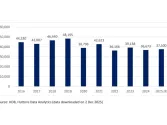
Asia Pacific property markets lead global recovery
Japan is gradually emerging from its decades-long deflationary slump.
Asia Pacific property markets have rebounded faster than North America and Europe post-pandemic, thanks to active local investors and favorable economic conditions. However, questions remain about how long this momentum will last.
According to Zurich’s Real Estate Outlook 2025 report, a stark divergence is emerging between Asia's two largest economies, China and Japan, mirroring the economic contrast seen in Europe.
China faces mounting deflationary pressures and a weakening housing market, prompting the People's Bank of China to push interest rates to record lows.
Conversely, Japan is gradually emerging from its decades-long deflationary slump. Long-term borrowing costs in both countries illustrate the shifting economic landscape.
This divergence is shaping the strategies of real estate fund managers. China now plays a less prominent role, while Japan, despite higher interest rates, continues to attract substantial investment.
Analysts suggested that Japan's rising rental growth potential offsets the negative impact of increasing rates, a stark contrast to the experience in North America and Europe.
Elsewhere in the region, monetary and fiscal policies are creating tailwinds for property markets. South Korea and Hong Kong have already eased interest rates in line with Western central banks. Australia and Singapore are expected to follow suit by 2025.
However, economic uncertainty and capital market volatility loom as potential risks. Analysts warned that incoming U.S. trade policies could dampen cross-border real estate investment, despite the positive effects of lower interest rates.
Moreover, the return-to-office rates in Asia Pacific remain the healthiest compared to the U.S. and Europe, but challenges persist. The region's office landscape is highly diverse, the report noted. Markets such as Seoul, Singapore, and Japan are navigating typical property cycles, with new developments shaping vacancy and rental trends.
Meanwhile, Greater China grapples with economic weakness, and Australia undergoes structural changes reminiscent of Anglo-Saxon markets.
Residential markets across Asia Pacific are also undergoing significant changes fuelled by demographic shifts and evolving consumer preferences. Rising housing affordability concerns and shrinking household sizes are driving a trend toward renting rather than homeownership.
Japan's multi-family market stands out for its institutional maturity and stable net operating income, bolstered by urban migration despite demographic challenges.
In other regional markets, the professionally managed multi-family rental sector remains nascent, offering potential for growth. Australia’s build-to-rent segment is also expected to thrive, despite recent changes to immigration policy.



















 Advertise
Advertise




